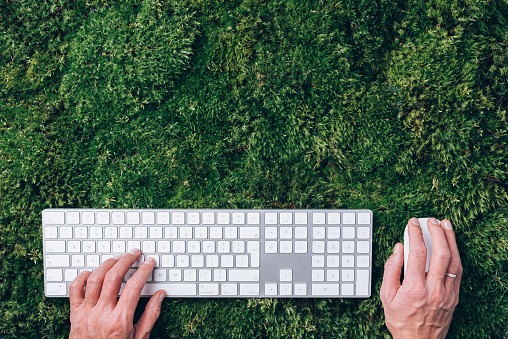
What is Biophilia design and why it’s something to consider
By Sammie Luna, Interior Designer, DEI Incorporated
Biophilia is a concept that has been explored for years and has recently had great success in the world of design. However, since COVID, the need and strive for biophilic designs has grown to be more important and sought after. COVID forced many companies to learn how to function remotely in order to survive the pandemic. The companies that are still standing have faced difficulty in bringing their employees back into the office. Employees who were required to work from home for a long period of time grew accustomed to the safe and comfortable work environment their home provided. So how can companies, and even businesses, entice people to come back into their buildings and have in-person experiences again? The answer could be biophilic design.
What is biophilia? Biophilia is the theory that we have a natural, human gravitation towards the forms and elements of nature. We are naturally driven and want to be close to the things of nature as it provides us with comfort and peace. Biophilic design is incorporating these aspects of nature into everyday spaces with a goal of creating human connectivity to nature. It considers the user’s well-being, health (mentally, emotionally, and physically), and safety and incorporates aspects of nature to address each of these areas.
Biophilic design is not simply utilizing plants throughout a space or adding more windows. We begin with the elements and principles of design, which are foundational concepts that designers use to make decisions. The elements are basic pieces that make up any object or design, such as line, shape, form, etc. The principles are the combination of different elements to create structural design components, such as balance, movement, pattern, etc. We then look at nature through the lens of these elements and principles and extract features that can be translated into an architectural application. This is called biomimicry; it is the imitation and translation of natural processes and organisms into design solutions and inspiration. Examples of biomimicry are in our everyday lives, such as Velcro (inspired by how burs hook onto animal fur), city planning (inspired by the growth of slime mold), and wind turbines (inspired by the fins of humpback whales).
An example of successful biophilic design on a large scale is the Milwaukee Art Museum. The exterior of this building has an angled spine and long, extended structures that mimic a bird in flight. This creates a sense of movement and excitement that intrigues potential visitors. Another example that is more applicable to everyday businesses is the carpet collections launched by Mohawk that were inspired by mycelium and wild mushrooms. For their Above and Below collection, they were inspired by the web-like formation of mycelium and how its purpose is to deliver nutrients to plants. Their Wild Dyer Collection is made up of colors and textures pulled from mushrooms. By using flooring like this in a space, a sense of flow, growth, and connectivity is created. It is subtle inspiration, like these examples, that impacts a space and creates an experience without being overbearing or too literal.
In a post-COVID world, biophilia needs to be more seriously considered and applied to our everyday lives. On average, Americans spend 34.6 hours in the office per week. We as a society need to be thinking about the well-being of our coworkers and employees and how small decisions can have a large impact. Integrating biophilic design into the workplace can create an environment where people have in-person interactions again but feel happier and more comfortable outside of their homes. I believe COVID has changed people’s perspective and they now value experience over efficiency. Biophilia could be the simple solution to merge the two together.
About DEI Incorporated
DEI is a forward-thinking, expert driven architectural design/build company founded in 1985. DEI has designed, built, or remodeled over 1,800 financial facilities and transformed banks and credit unions into retail environments, a place to cross-sell products and services, improve efficiencies and increase the bottom line while connecting to your digital tools and spaces. Learn more at www.dei-corp.com


